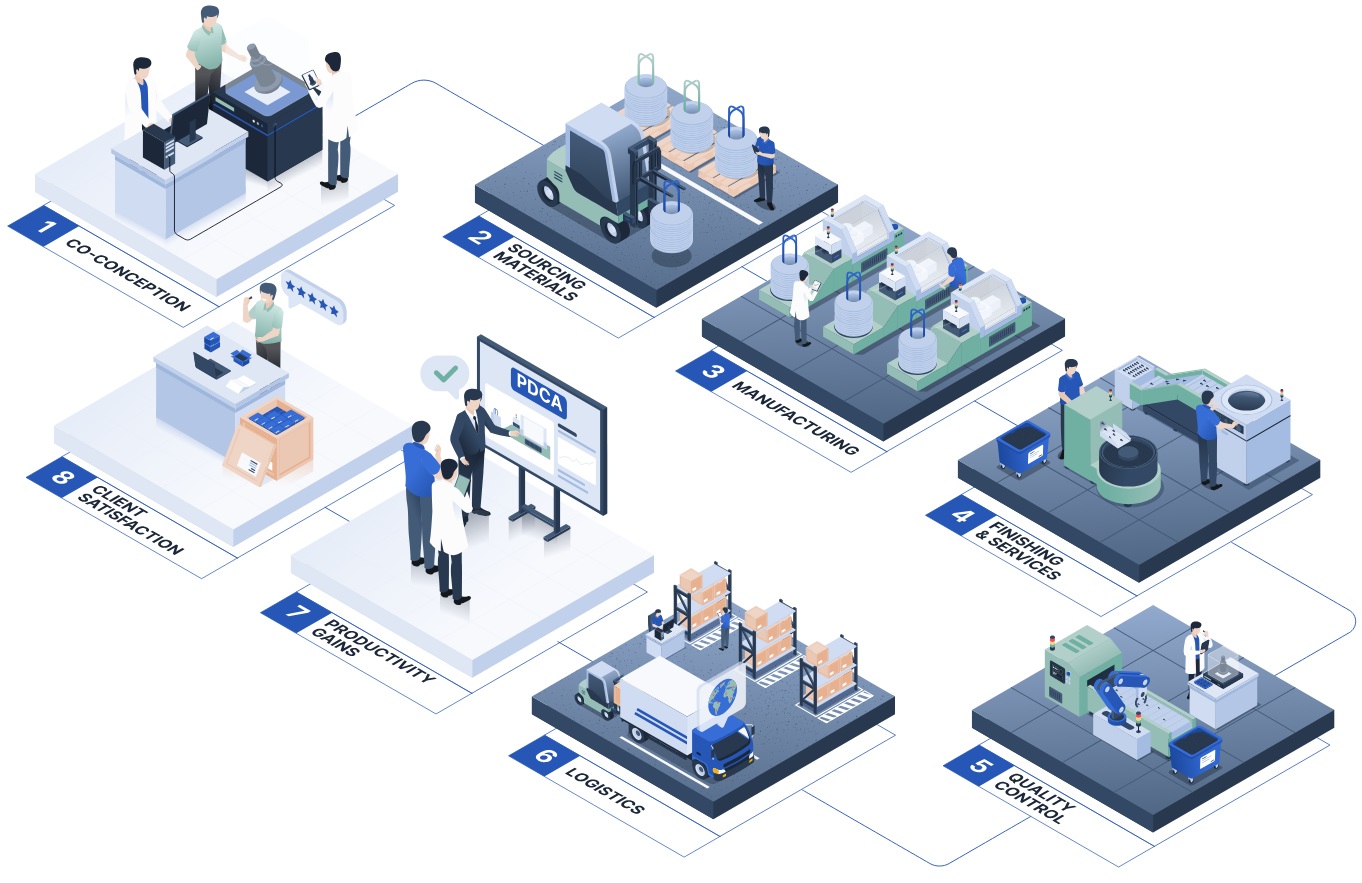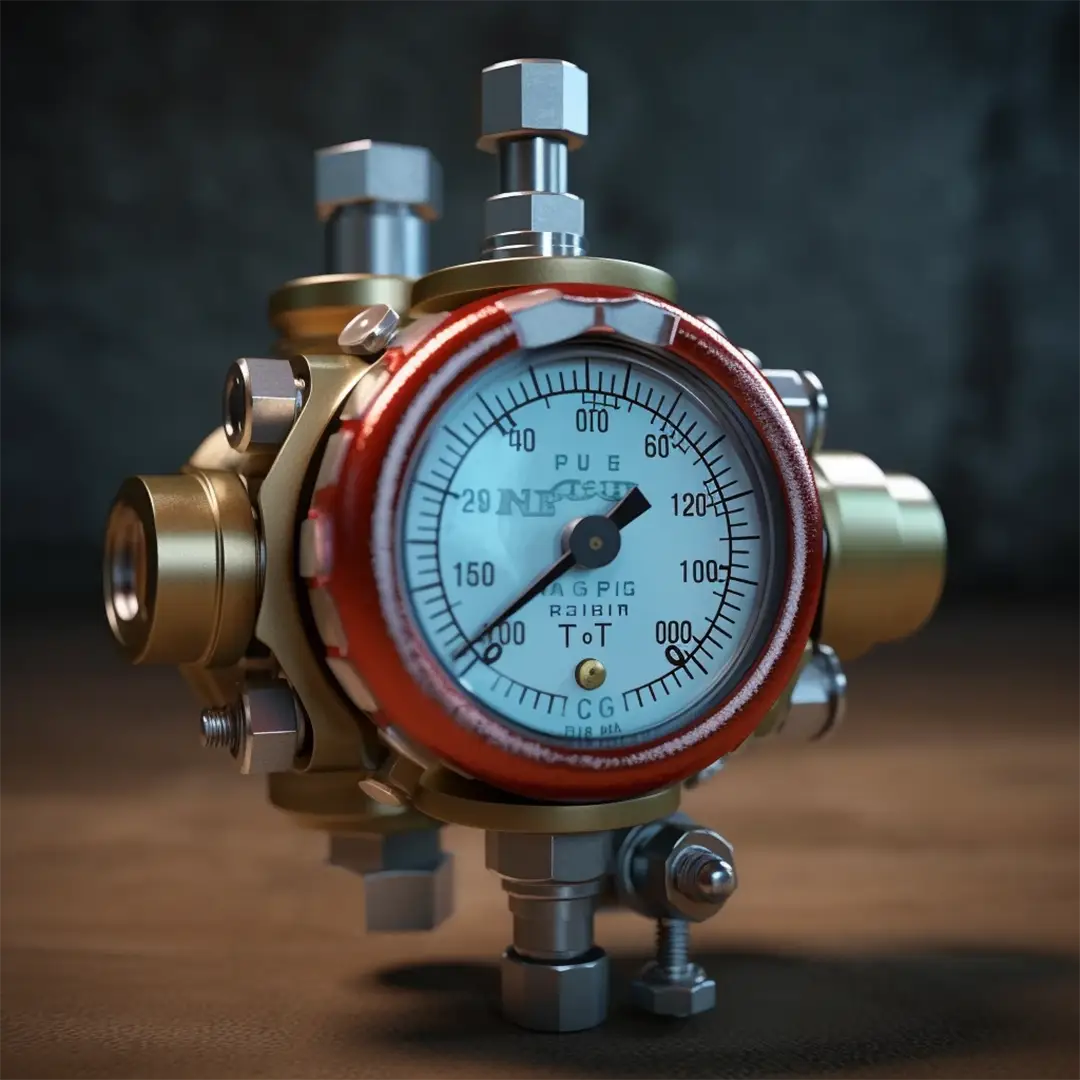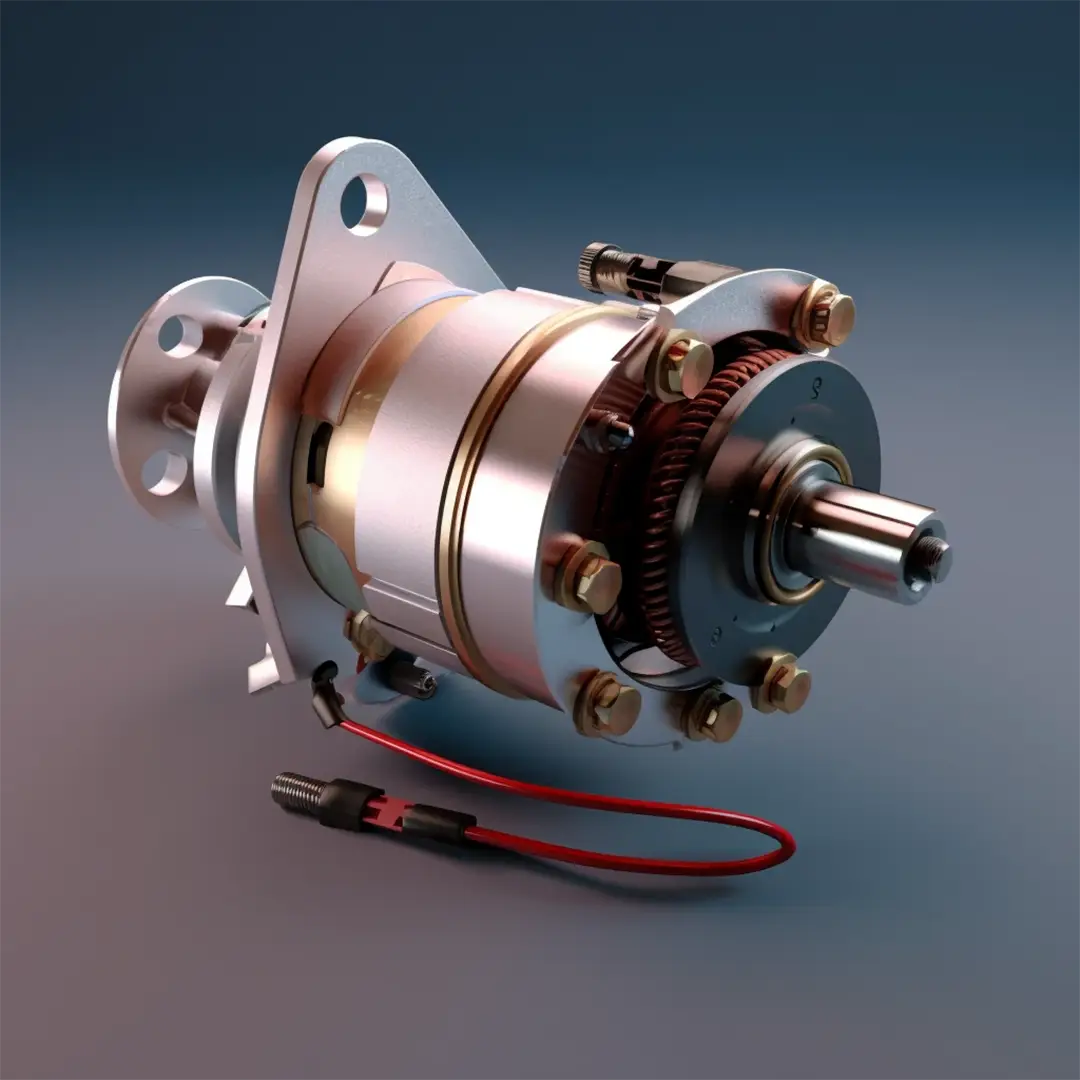2, rue de la Ternière
Avrille Cedex FRANCE
Bar turning is a process for manufacturing precision parts, mainly used in industry.
It consists of machining cylindrical parts by turning or milling them from bars or crowns by removing material.
- Turning allows the production of complex and high-precision parts used in many sectors such as automotive, aerospace and electronics.
- Our high speed automatic numerical control and cam lathe equipment allows us to work with hundredth precision on medium and large series.
Screw-cutting - Machining - Mechanical part on plan





Screw-cutting - Machining - Mechanical part on plan







- Feasibility control using the FMEA tool, which is used to analyze failure modes, their effects and their criticality.

- Manufacture of initial samples in medium series, and validation of production with PPAP according to the IATF 16949 standard.

- Development of detailed production processes according to the APQP quality process

- Collection and analysis of production data to identify trends and variations. 3PPM in 2023.
The advantages of LGC Industries manufacturing


.png)

.png)


- 24 Multi-spindle lathes
- 45 Spins Escomatic
- 42 Fluting machines
- 8 Plunge and thread grinding machines
Learn more about the technical characteristics of our products
Discover other products
What is decolleting?
Mechanical turning is a CNC machining or traditional machining technique that allows the design and manufacture of precision mechanical parts by removing material through the rotation of the material and the action of a cutting tool.
Bar turning is used in a wide variety of fields and on many materials (steel, stainless steel, aluminum, etc.). Turning allows the creation of specific parts used in cutting-edge sectors such as aeronautics, medical, nuclear, etc.
Today, companies specializing in precision bar turning such as LGC use numerical control machines. These new CNC turning machines are controlled by a program and controlled by an operator, they facilitate the realization of micro turning.
Screw-cutting and precision machining: from prototype to mass production
Precision turning is an advanced machining process that consists in giving a precise shape to parts by removing material.
This process at the heart of our industry has undergone constant evolution since its appearance in the 18th century. Nowadays, it has evolved towards modern bar turning thanks to the arrival of increasingly efficient and precise CNC machine tools.
The decolleting has become an essential machining process in the creation of precision mechanical parts in numerous cutting-edge sectors.
At LGC Industries, we have perfected the art of mechanical bar turning for over 80 years, surpassing the expectations of our customers through our commitment to excellence and the use of new cutting-edge CNC machining machines.
What is the turning of mechanical parts?
Mechanical turning is an innovative machining technique that makes it possible to produce high quality custom parts. With increasing demand in cutting-edge sectors, bar turning has become an imperative to meet constantly changing needs.
The decolleting, an industrial process used to create turned or “revolution” mechanical parts such as necked pins, nozzles, bolts, and much more. Thanks to this precise CNC turning technique, the material is carefully removed to transform a raw element into a specific element using a high-performance CNC tool.
Turning is achieved thanks to our industrial facilities specialized in the design and production of parts by removing material.
Industrial installations that result in a Machine park composed of numerous CNC machine tools:
- 24 multi-spindle lathes
- 45 escomatic turns
- 42 fluting machines
- 8 plunge and thread grinding machines
- 2 cold forming machines
- 3 automatic packaging lines
- 6 optical sorting and metrology machines
- 2 robotic assembly lines
- 1 vibratory finishing and polishing unit
The advantages of bar turning
- Productivity and adaptability: our turning machines can machine parts from a single unit to a very large quantity, all in a very short time.
- Quality and efficiency: the turning machines offer precise dimensions with impeccable finishes thanks to micro-turning machines which are extremely precise.
- Material and money savings: the parts are continuously machined in the machine, which considerably reduces chips.
- Ecology, LGC eco-design: we recycle 86% of our waste (such as oil and chips that are escaped during bar turning), in particular thanks to our chip extractor machine.
The different CNC machining techniques related to bar turning
In-phase turning is a precision machining process aimed at shaping mechanical parts into specific pre-established shapes.
This process includes various machining operations, which we offer in our workshops:
- Dressing: consists in machining the raw face of a part by moving the tool perpendicularly in relation to its axis of rotation.
- Carriage: technique aimed at creating a cylindrical or conical surface outside the part.
- Drilling: creating holes in a part using a drill.
- Boring: creating a cylindrical or conical surface inside the part.
- Grooving: creation of internal or external grooves for various applications, such as housing a circlip on an axis.
- Threading: making threads in a male part using a specialized tool.
- Tapping: the process of creating a thread inside a hole.
- Chamfering: creating chamfers to eliminate sharp edges.
- Cutting: shaping a groove up to the axis of the part to separate it from the bar.






















